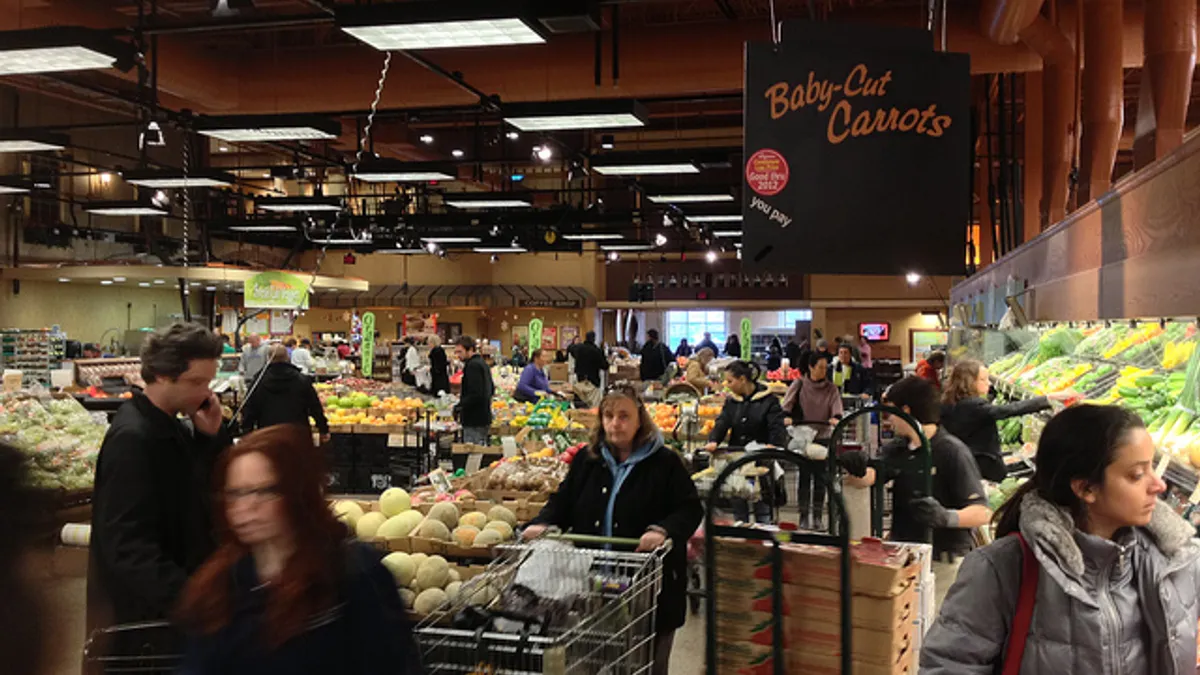Dive Brief:
- Data from the U.S. Department of Agriculture shows that food at home prices dropped 1.3% last year — the first annual decline since 1967, according to Food Business News. Annual price gains have averaged 4% over the past fifty years, with spikes as high as 16%.
- Meat, eggs and dairy all saw declines, according to the USDA. Factors included a strong U.S. dollar, increased production and recovery from the 2015 bird flu outbreak which decimated the U.S. supply of egg-laying birds.
- Fruit prices, on the other hand, were up 2.2%. Vegetable prices remained the same as the year prior.
Dive Insight:
Price deflation over the past year has been a boon for consumers and a real headache for retailers. With shoppers focused on finding lower and lower prices, grocers have had to constantly one-up their competition on price promotions, which draws traffic but further erodes their margins.
Whole Foods and Kroger, among others, have cited price deflation as one reason for financial results that were less-than-stellar.
“We’re in the middle of this cycle, and it’s not fun,” Kroger CEO Randy McMullen told analysts during an earnings call in December.
What’s behind the falling prices? For food at home, which includes raw and perishable goods that fall under the USDA’s purview, a host of factors are to blame, including the strength of the U.S. dollar, cheap oil, and cheaper feed prices that lead to a surplus of dairy and meat.
Fresh fruit, on the other hand, saw prices jump mainly because of a prolonged drought in California, which accounts for a large percentage of U.S. production.
Analysts are predicting deflation will ease this year, and egg and beef prices have already stabilized. That’s a bit of good news for grocers, who face the larger challenge of maintaining margins in an increasingly competitive market.










